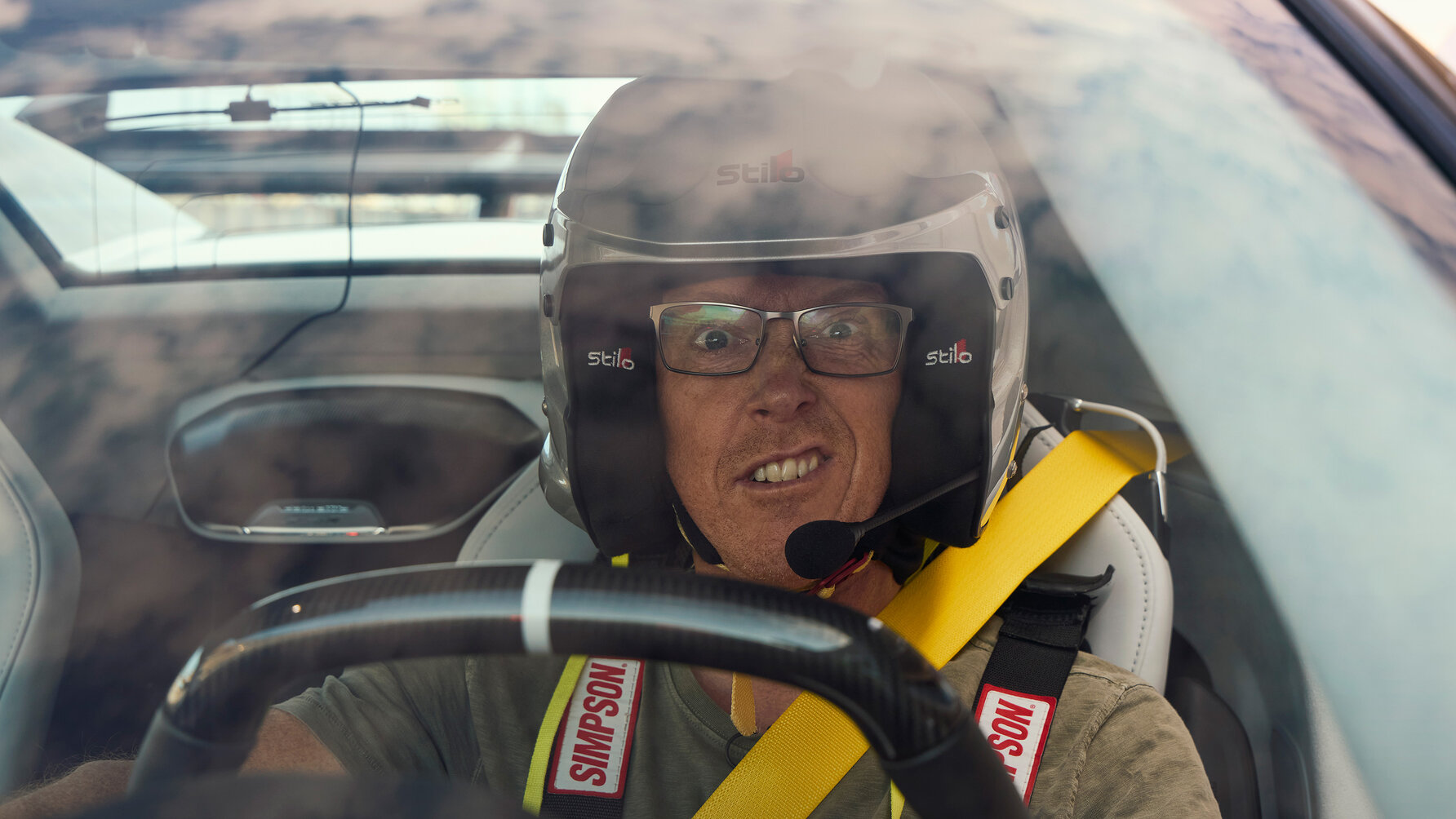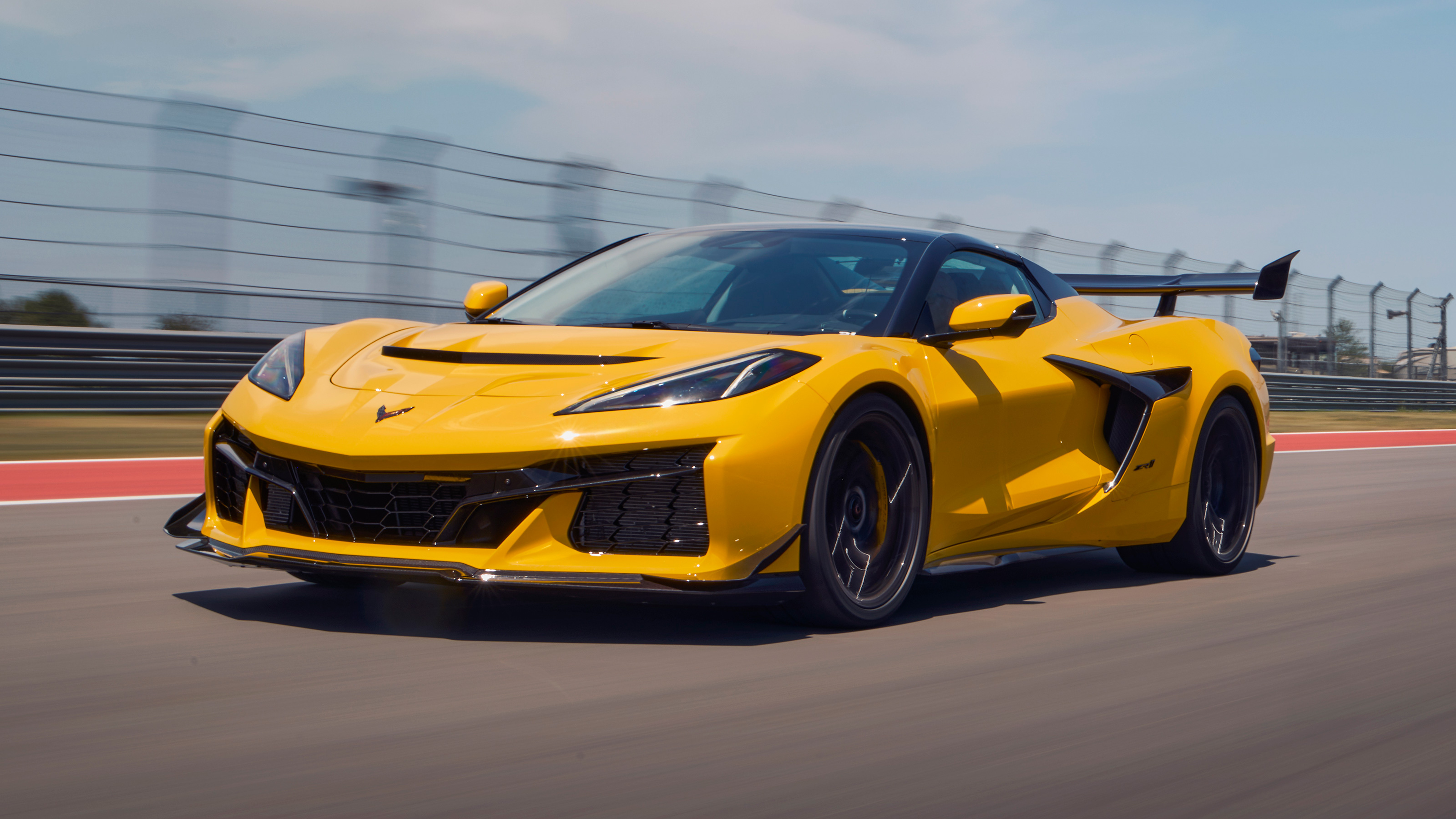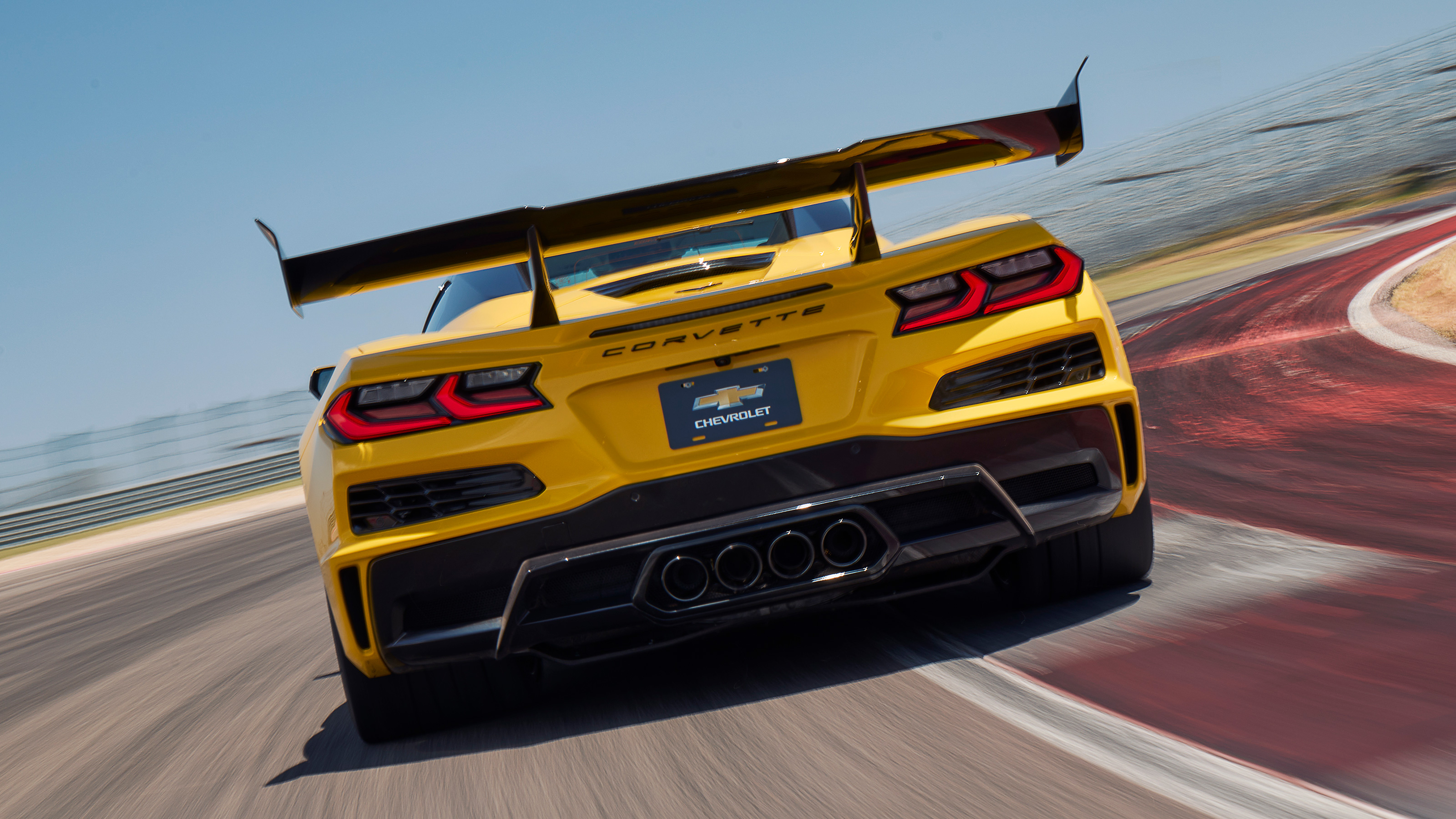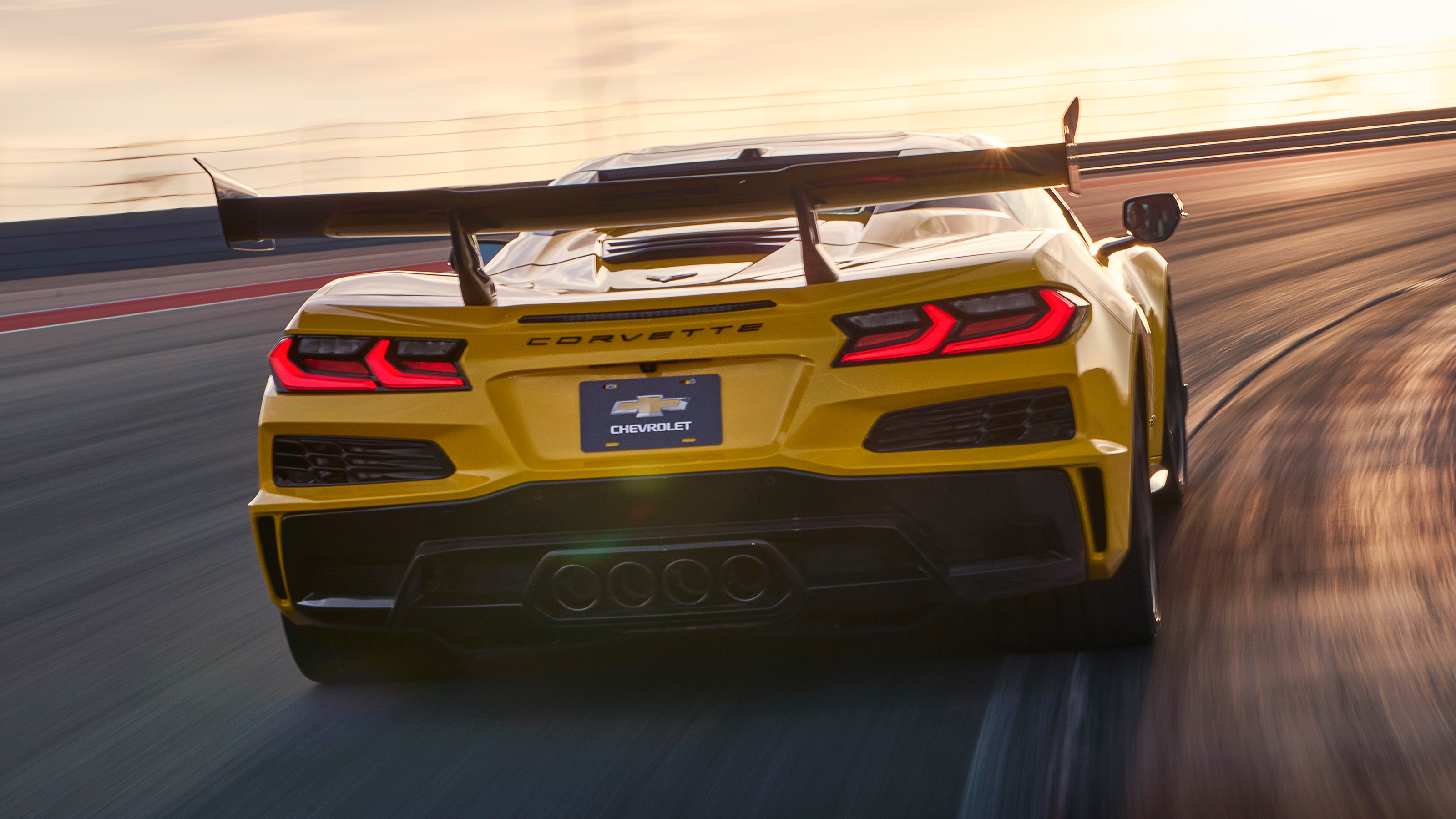
Chevrolet Corvette ZR1 review: America’s most powerful V8 production car ever
So can the Corvette ZR1 handle 1,064bhp?
Yep. Next question.
I’m going to need more than that.
Let’s start with the engine, because it’s ridiculous isn’t it? Where Aston Martin, McLaren and Ferrari have had to hybridise to cross the mythical barrier into four figure power outputs, Corvette just took the Z06’s 5.5-litre V8 and bolted on a pair of turbos. And yee-hah there you have it – 670bhp becomes 1,064bhp. 200bhp extra from each turbo. Mad world.
Hang on, was it that simple?
Of course not. The engine is so different it now has an entirely new designation: LT7 rather than LT6. The compression ratio and rev limit has been dropped to aid torque, the conrod fractionally shorter to leave a bigger combustion chamber, the piston head dished out more. The crankshaft has been rebalanced, the heads are new, as is the entire intake and exhaust system.
It is – and this is the easy thing to overlook when talking about American V8s – a genuinely exotic powerplant. That also happens to sport a pair of the largest turbos ever fitted to a production car. The 76mm monoscroll blowers are better for peak power and Corvette claims to have largely eliminated lag with valve timing to keep engine cylinder pressure high when you lift off. Another claim to fame: the most powerful production V8 ever made in America. God bless the US of A.
Give me more engine facts!
The turbos spin at up to 137,000rpm (that’s 2,283 rotations per second) and at that speed the turbo tips are travelling at 1.7 times the speed of sound. The impellers get to two-thirds of the belly temperature of the Space Shuttle on re-entry and so close are the turbos mounted to the exhaust manifold that the air going into them is still on fire.
Flat out, the engine demands two gallons of fuel per minute. Expressed another way it downs a pint every 4.5 seconds. Cheers.
Now let’s have the numbers.
Maximum torque stands at 828lb ft available anywhere from 3,000-6,000rpm. 0-60mph takes 2.3s, it’s through the quarter mile in 9.6s at 150mph and maximum speed – as the boss himself discovered late last year – is 233mph.
And it’s rear-drive, right?
Correct, all that power and fury is fed through a pair of 345-width Michelin PS4S rear tyres. Or Cup 2Rs, if you spec the ZTK package. This brings grip: both mechanical (the almost-slick, yet still somehow road legal, tyres, plus stiffer springs and bespoke magnetic ride control) and aerodynamic (the whacking great rear wing is balanced with extra aero work at the front).
Actual maximum downforce isn’t particularly impressive given how massive that rear wing is – just 444kg at 186mph. A GT3 RS produces close to double that number. Look underneath, there’s not much of a rear diffuser to pull the back end down.
You have to choose your weapon. Want a fast lap and the most fearsome acceleration? Have the ZTK package. Want the 233mph max? You’ll need the regular car without the draggy tail. You can also choose between hard top and convertible. The latter adds 45kg, but the former still has a lift-out roof panel. Every ZR1 can be open air, it’s just a question of whether you’re up for a bit of manual labour.
Top Gear
Newsletter
Thank you for subscribing to our newsletter. Look out for your regular round-up of news, reviews and offers in your inbox.
Get all the latest news, reviews and exclusives, direct to your inbox.
Doesn’t that mean the chassis is a bit wobbly?
You’d have thought so, but the all-aluminium ZR1 is commendably stiff. Corvette positions the ZR1 as being a little softer than the naturally aspirated Z06, less snatchy at the limit which, let’s face it, is just as well when you’ve got this much power on tap.
A genuine 1,000bhp, d’you reckon?
I’m sure it is. But don’t think that automatically qualifies the ZR1 as a hypercar. There’s a question of pedigree for starters, but more than that, there’s the weight involved. 1,665kg dry works out at a minimum of 1,800kg with fluids, which puts the power to weight ratio at 591bhp/tonne. When a 1,277kg dry McLaren 750S is 579bhp/tonne. So there’s not much in it.
I have it on good authority that the 750S hits a peak speed on COTA’s back straight of about 175mph. The fastest I saw in the ZR1 was 178mph. It’s very, very fast, but it isn’t a Koenigsegg Jesko. That car made me yelp.
But to go back to my original question, the car can cope?
Absolutely. Firstly because the ZR1 ramps into its powerband progressively. Although peak torque claims to arrive at 3,000rpm, and you’ve heard the turbos spooling up from lower down, you can flatten the throttle here without fear of it spitting wheelspin at you. Instead what you get is this huge linear thrust that builds and builds and as the needle sweeps past 6k you start to think ‘oh yeah, now this feels like 1000bhp’.
There is lag though. It’s just that on track, with the revs kept up, the turbos spinning fast and the engine’s air management working hard, it’s almost completely nullified.
Secondly, provided you spec the almost-slick Cup2R tyres, get them warm and run them at the right pressures, the grip is unbelievable. Literally 20mph faster through some corners than the PS4S, 7-8 seconds faster over the course of COTA’s 3.43 miles. If you’re going to use your ZR1 on track you need the ZTK package. End of.

On the PS4S you’re aware of how hard the chassis and traction electronics are working – and that they aren’t as sophisticated as McLaren and Ferrari’s. Where those cars have invisible guiding hands that hold you in slides, the Corvette is a little more clumsy.
But underpinning all of this is an exploitable, friendly chassis that doesn’t feel overwhelmed. It’s really nicely balanced, resists understeer way better than you’d imagine, and is most likely to step out when trail braking into an apex. The steering isn’t packed with feel, but is connected and confidence inspiring, and the Magneride suspension means the chassis platform stays level and doesn’t get bucked or bumped around.
So it’s up there with the best Europe has to offer?
In speed terms, yes. It’s not as energetic, immediate and hard-hitting as the 296 or 750S, it doesn’t dance quite so delicately, and its twin clutch gearbox doesn’t pop the shifts home as rapidly. But it’s a force of nature that sounds fantastic and knows how to pick apart a track. Shout out here for the mega brakes – carbon ceramics are standard fit.
Any issues?
I drove several different cars, and a couple of them suffered slight power loss on the main straight – an issue put down to fuel quality. A reminder that this is an exotic engine and needs to run on the best fuel.
Otherwise I’m hugely impressed by the ZR1 – with a special shout-out, and I know this is geeky – for the cooling. A 1,064bhp powerplant develops enormous heat. Not only in the engine itself, but in its surroundings. The one concession Corvette has had to make is doing away with the frunk to make way for an extra radiator pack, but evacuating all that air from a tight engine bay without melting the wiring or bodywork is immensely impressive.
Just bear in mind that previous experience with the Z06 suggests the load bay above the exhausts doesn’t stay cool. Now I reckon it’ll melt ice cream faster than a microwave.
Does Corvette charge McLaren and Ferrari money for this?
What do you reckon? This is the cheapest way into 1,000bhp short of strapping a season’s fireworks to a monkey bike. In the US prices start at $174,995, with the convertible $10k, more. So that’s £130k plus change. It’s possible, with surprisingly little effort, to spend that much on options alone on a 750S or 296, on top of an asking price almost double what Corvette asks.
The ZTK packs is only $1,500 unless you want the rear wing in carbon ($8,495), carbon wheels are on the options list ($13,995), and you probably want the $11k 3LZ pack which brings upgraded Bose hifi, GT2 bucket seats and microfibre trim. But still you’re hard pushed to spend $230,000 (£170k) on your ZR1.
But it’s still not a great looking car is it? Any plans to bring it to the UK?
The design, in common with all Corvettes, does lack finesse, and the ride height is still oddly high although the giant rear wing does bring a bit of visual balance (OK, distraction). You also sit too high in a cabin that hems you in, separating you from the passenger. An interior remodel later this year improves that no end, removing the bar of air-conditioning controls.
Unfortunately, while not a limited edition car, it’s highly unlikely to make it to the UK. There’s just not the demand in Europe where pedigree plays such a strong role. Good car, though. Sounds great, goes properly hard, is both amusing and composed. Engine is wild. To drive compared to its best rivals it’s an 8, value ups it to a 9.
Featured

Trending this week
- 2026 TopGear.com Awards
The very best cars of the year: welcome to the 2026 TopGear.com Awards






